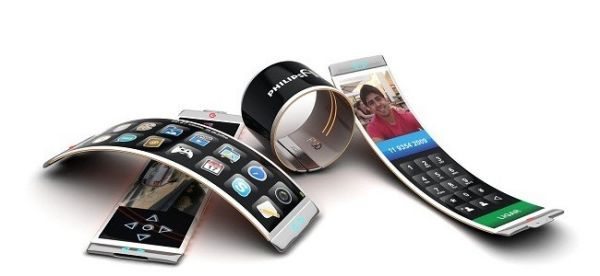The future of bendy phones discussed
What if, in the very near future, mobile phones were introduced in a format that was as thin as a sheet of paper and could be bent or folded into any shape? At the very least, a strong yet flexible device would mean extra durability and a longer life, because its pliable nature would mean less chance of it being damaged. In fact, Samsung and Nokia have developed prototypes of a bendy phone already, and some have been demonstrated at gadget shows and have attracted a huge amount of attention. A number of other manufacturers are also experimenting with the concept of a bendy phone, including Phillips, LG, Sharp and Sony.
New and upgraded software has dominated technological developments during the last few years, so it’s not surprising that hardware is now getting a lot of attention. A flick through the TV shows of the last few decades demonstrates how the mobile phone has changed from heavy, clunky brick-sized handsets to today’s lighter, slimmer gadgets with Internet connectivity and superior software.

Advanced materials
It must be said that flexible screens are not entirely new — Galaxy smartphones already use AMOLED display technology, or active-matrix organic light-emitting diode, in the form of a thin film. Currently, flexible screens are also used in media players and digital cameras, providing displays with better colour that use less power. The reason that entire devices are not flexible already is because the other components that make them function must be encased in rigid material. This is the area that is getting a lot of attention from developers, including South Korean company LG Displays and UK firm Plastic Logic.
Electronics revolution
Experts at the University of Cambridge are working on a project for Nokia to examine the possibility of replacing silicon with a material called graphene, which is made of pure carbon. It is predicted that graphene will enhance the performance of OLED-type flexible phones — the theory is that even a flexible handset’s battery can be manufactured from this material. Samsung has already made significant advances and is widely expected to be the first company to commercially produce flexible phones.
Consumer use
When bendy phones, tablets and TVs become available, it seems likely that those who simply must have the latest gadget will rush to buy them. But what about all the other handsets and devices? Will they be consigned to the dustbin, and how will customers be able to acquire this new technology without spending a fortune? One way is to sell stuff online and trade in older mobiles for cash. Just as some mobile phone users have not upgraded to smartphones, and don’t plan to, so there will always be some people who want to hang on to or choose to buy older models. In fact, electronic gadgets of all sorts can be disposed of via online sites, as can CDs, DVDs, books and clothes. This form of recycling is better for the environment and is also a great way to earn some extra money so that the new bendy technology will be more affordable.

Live Comment
Your email address will not be published.